Mount Kilimanjaro is a dream climbing destination for any trekking enthusiast. Apart from being the tallest structure in Africa, trekking is a whole thrill in itself.
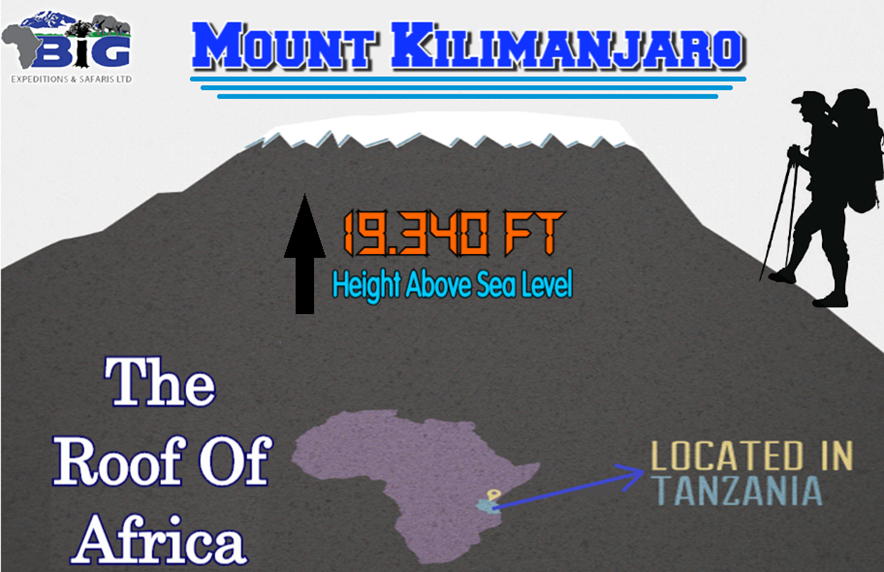
Even though there is no professional training required for Climbing Mount Kilimanjaro, it is after all not easy, especially if planned improperly. So here’s a brief updated 2018 guide which contains everything you need to know about the mighty Kilimanjaro or Kili as it is called fondly.

Location: Kilimanjaro region, Tanzania
Starting Points: Marangu, Rongai, Lemosho, Shira, Umbwe, And Machame
Ending Point: Kibo (Uhuru Peak at 5895 meters)
Altitude: 4,900 metres from the base of the mountain, and 5,895 metres above sea level
Duration: 5 to 10 days (including ascent and descent) depending upon the route and fitness level of trekkers
Even though it is open for trekking all time of the year, not every month gives the same experience. The two best seasons for Climbing Mount Kilimanjaro are January to March, and June to October.
If trekking through heavy snowfall is your aim, then January to March is the best time for you.
June to October marks the summer season in Kilimanjaro, hence, there are relatively lesser chances of snowfall during the summit. The lush green environment with good all-around scenery will accompany you on the tour.
Trekkers often have a hard time picking the best Mount Kilimanjaro Climbing Route for their Kilimanjaro adventure. And they should have, as the route can sometimes influence the chance of success of reaching to the top. Keep in mind that there are not one by six different routes to choose from, each different from the other in terms of difficulty, steepness, accommodation option, sceneries, and last but not the least, price. So it’s a no-brainer to give “Choose The Right Destination’ a bit more thought. Here are the six different routes with general information.
Duration (in days): 5 to 6 (including acclimatization)
Distance Covered (approx.): 70 kilometers
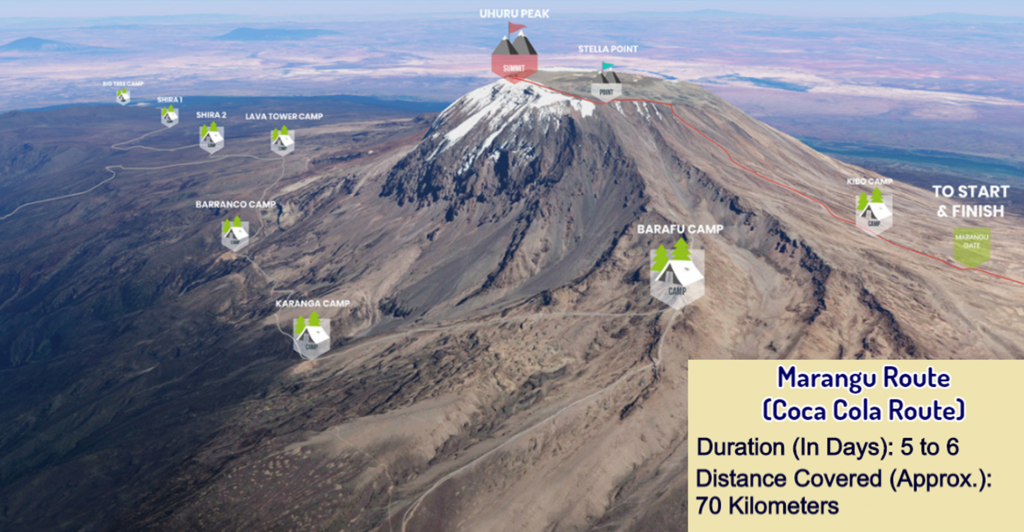
Popular Stopovers: Marangu Gate (starting point at 1860 meters) Mandara Hut (2700 meters), Horombo Hut (3720 meters), Kibo Hut (4703 meters), and Gilman’s Point (5685 meters).
Pros: Marangu Route is the easiest of all the trekking routes and the only one providing hut accommodation. As there is no camping equipment required, the total cost is lower.
Cons: Despite being the easiest, it has one of the lowest success rates which is partial because the trekkers are ill-prepared and take it for granted. Marungu is also crowded most of the time.
Duration (in days): 6 to 7 (including acclimatization)
Distance Covered (approx.): 74 kilometers
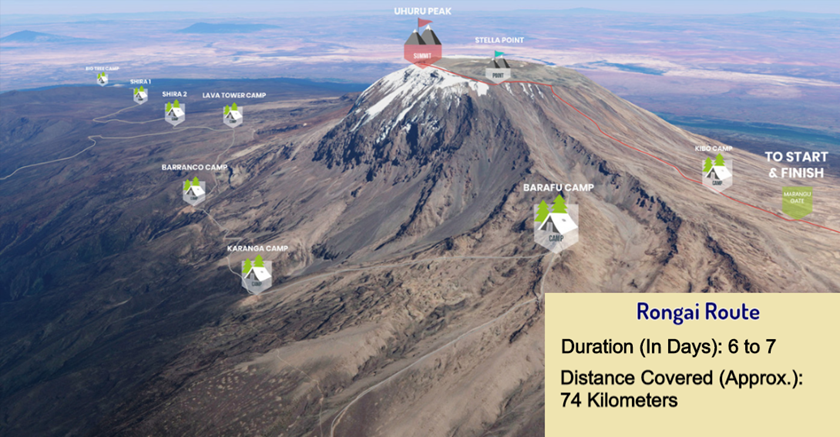
Places Of Halt: Rongai Cave/Nalemoru (1950 meters), Second Cave (2650 meters), Kikelewa Cave (3600 meters), Mawenzi Tarn (4330 meters), Kibo Hut (4703 meters), Uhuru Peak (5895 meters)
Pros: Rongai Route is one of the easiest Kilimanjaro routes and also quieter. Best weather condition as it approaches Kili from the driest side.
Cons: The price is usually higher due to additional travel time and resources required to reach the other side. The scenery is average.
Duration (in days): 6 to 7 (including acclimatization)
Distance Covered (approx.): 62 kilometers
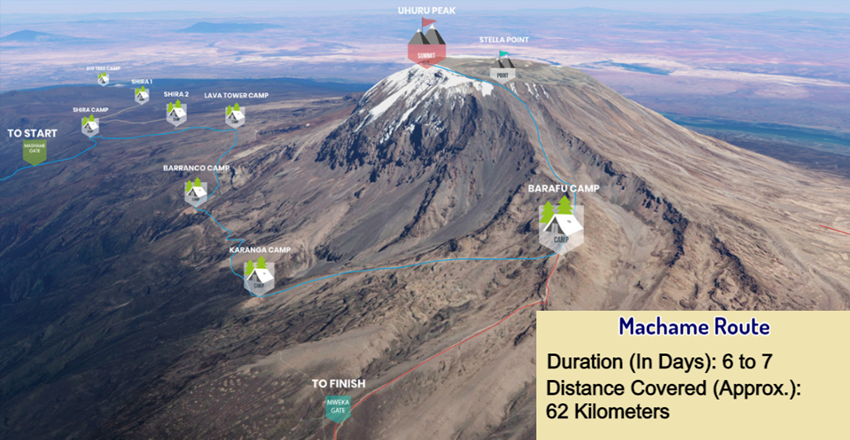
Places Of Halt: Machame Gate (1830 meters), Machame camp (3030 meters), Shira 2 camp (3850 meters), Lava Tower (4640 meters), Barranco camp (3985 meters), Karanga camp (4040 meters), Barafu camp (4680 meters), Uhuru Peak (5895 meters)
Pros: Machame Route is relatively lower cost, one of the most scenic routes, relatively higher success rate than Marangu.
Cons: It is comparatively difficult and very crowded.
Duration (in days): 6 to 8
Distance Covered (approx.): 72 kilometers
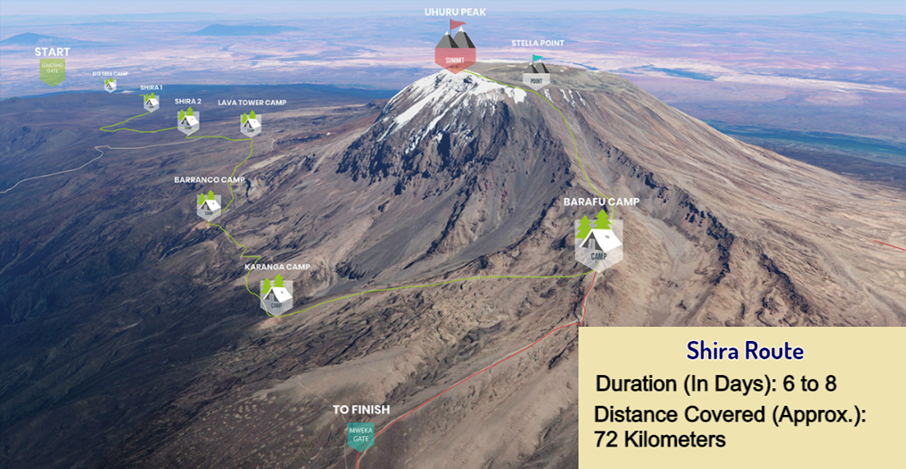
Places Of Halt: Shira Gate/Londorossi (2100 meters), Simba Camp (3600 meters), Shira 2 Camp (3850 meters), Lava Tower (4640 meters), Barranco Camp (3985 meters), Karanga Camp (4040 meters), Barafu Camp (4680 meters), Uhuru Peak (5895 meters).
Pros: Shira Route is very less crowded for the first half of the tour, and the scenery is excellent.
Cons: The cost is higher and so is the difficulty level. As it meets with the Machame trail, the route gets busy.
Duration (in days): 6 to 8 (including acclimatization)
Distance Covered (approx.): 70 kilometers
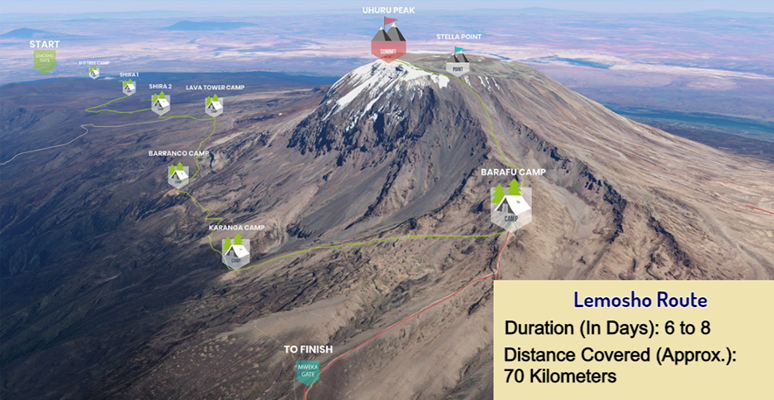
Places Of Halt: Londorossi Gate/Mti Mkubwa (2650 meters), Big Tree Camp (3480 meters), Shira 1 Camp (3850 meters), Lava Tower (4640 meters), Barranco Camp (3985 meters), Karanga Camp (4040 meters), Barafu Camp (4680 meters), Uhuru Peak (5895 meters)
Pros: Lemosho Route is a very scenic route with impressive success rates as it provides plenty of time for acclimatization.
Cons: As it converges with Machame and Shira, it gets very crowded. The cost is higher and so is the difficultly level.
Duration (in days): 5 to 6
Distance Covered (approx.): 52 kilometers
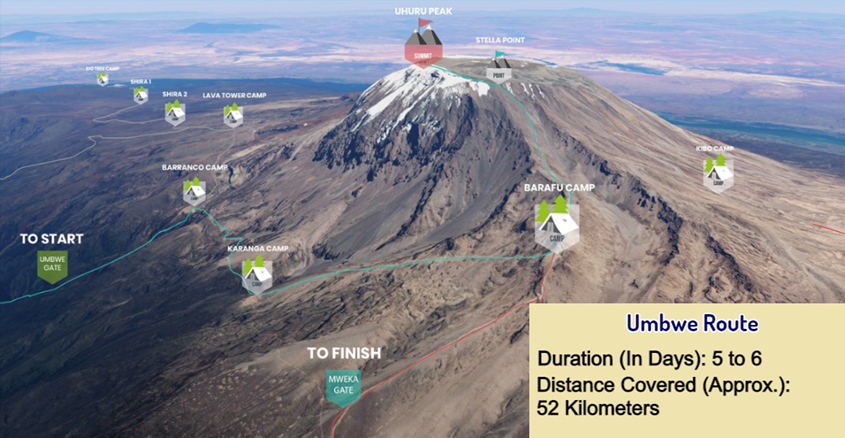
Places Of Halt: Umbwe Gate (1614 meters), Umbwe Camp (2850 meters), Barranco Camp (3985 meters), Karanga Camp (4040 meters), Barafu Camp (4680 meters), Uhuru Peak (5895 meters)
Pros: This trail is very remote and passes through pristine wilderness and caves.
Cons: Umbwe Route is technically difficult and challenging. Meant only for experienced trekkers.
Here are few tips from our experience of running the tour company which will increase your chances of summiting Kilimanjaro:
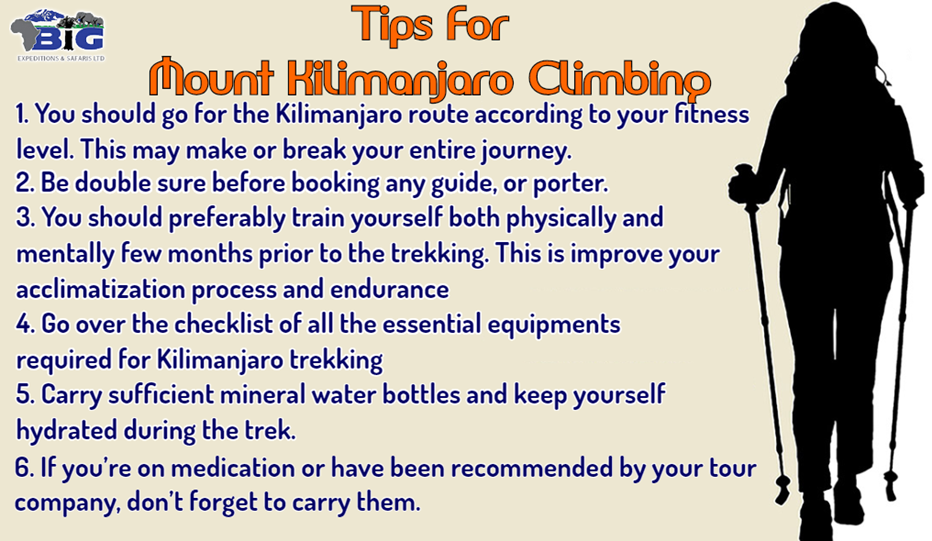
Mount Kilimanjaro Climbing is definitely one of the highlights of the Tanzanian tourism industry and receives well over a million tourists every year. The view from the top (especially the sunrise), is worth every effort you put in. If you’re looking to trek Kilimanjaro but in need of a helping hand, we’re just a call away. Send Big Expeditions & Safaris Ltd a message with your budget and requirements and we’ll get back to you with customized competitive packages!
2. Be careful when choosing your Kilimanjaro Operator. You should only book your climb with operators who are partners of the Kilimanjaro Porters Association project.
5. Make sure that you take sufficient water ( at least 3 liters a day) to keep yourself hydrated during the trek.
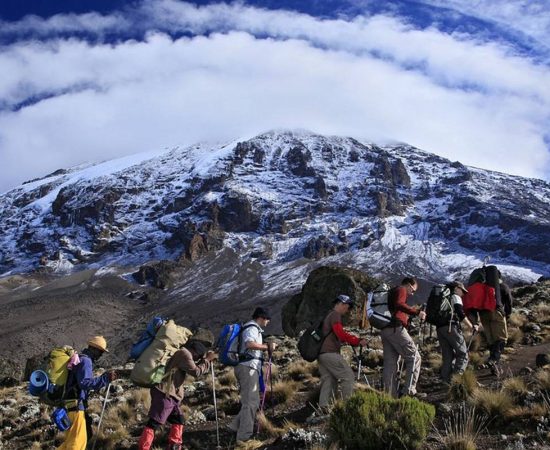
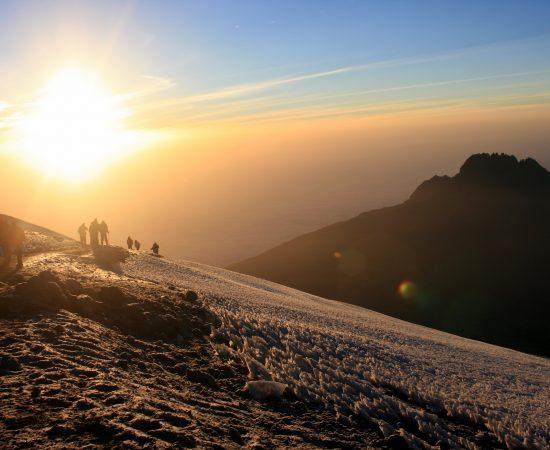
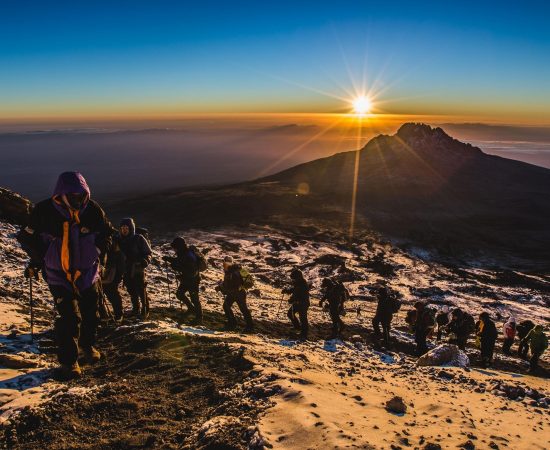

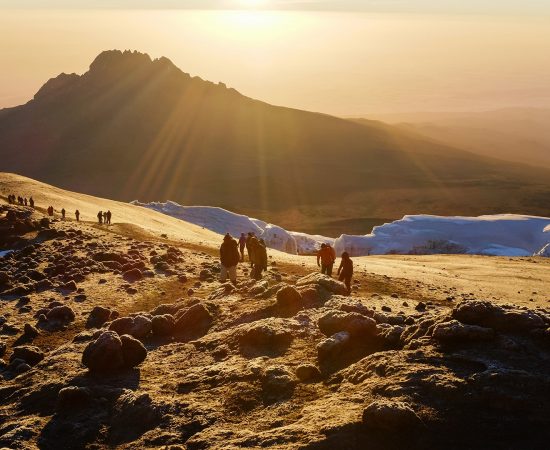
Subscribe our newsletter to stay updated.
Whether you are looking to explore the wildlife of the Serengeti, or begin your expedition up Mount Kilimanjaro, we have something suitable for all of you. Get in touch with us today and our team of specialists will help build your experience of a lifetime to Tanzania
Read More